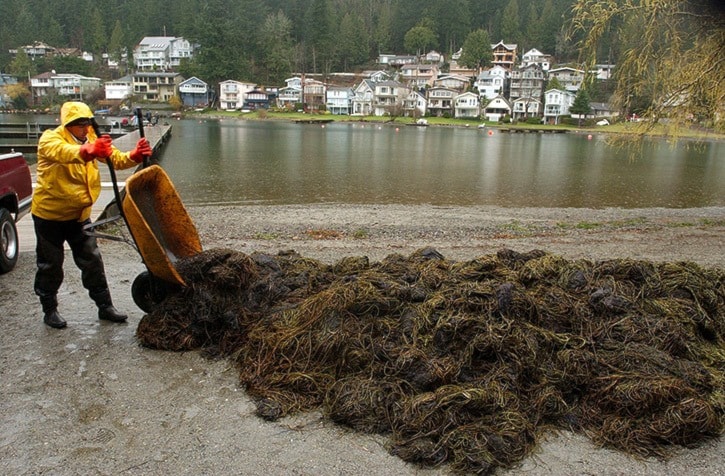It's time to bring the best minds to the problem of invasive aquatic plants — namely Eurasian milfoil.
It's become a huge problem at Cultus Lake in Chilliwack for example.
The long-term answer, according to the latest science, apparently isn't something simple like yanking it out by the root balls.
The invasive plant grows quickly and it can get in the way of swimming, waterskiing, and boating. It can choke out native species and interfere with fish habitat.
"It's been vexing us for so long. It was time to bring the best minds to look at how it's managed," said Marion Robinson, chair of Cultus Lake Aquatic Stewardship Strategy.
A workshop using video conferencing on water quality and Eurasian Watermilfoil in Cultus and Nicola Lakes is set for Feb. 15 in the Aboriginal Gathering Place on the Chilliwack campus of UFV. It goes 8:30 a.m. to 4 p.m. with a traditional lunch. It's organized and hosted by The Cultus Lake Aquatic Stewards (CLASS), facilitated by the Fraser Basin Council, and other partners.
Best practices and management ideas have changed over the years.
"There is a different way to tackle the milfoil," she said. "It's about managing it and managing it scientifically. But there is no silver bullet."
The experts will be assessing the science of how the plant spreads and sharing experiments with controlling it in other regions.
"Local stewardship groups, agencies and government have had invasive aquatics on the agenda for more than five years," Robinson said.
Recent questions have come forward about science and best practices, hence this workshop.
"The agencies, consist of many networks that we hope to bring together regarding lakes and invasives," she added.
They include Cultus Lake Aquatic Stewards, a network of 60 individuals, agencies, non-profit organizations, and four orders of government (first nations, regional, provincial, federal). Also participating is the Nicola Lake Working Group.
One of the experts is John D. Madsen, Geosystems Research Institute, Mississippi State University.
Eurasian watermilfoil (Myriophyllum spicatum) is known to be a widespread issue. It's a non-native plant considered invasive in the lakes and rivers of North America.
The biology and physiology of this plant has conferred some properties that have enabled it to spread and dominate in a wide variety of habitats in North America, including the ability to develop stem fragments and its canopy-forming growth form.
jfeinberg@theprogress.com
Twitter.com/chwkjourno
